A knife named “Lil Whitetail Hunter” is bound to be a hunting knife. Here’s what I found out about this Cross Knives blade.
by Leon Pantenburg
Teddy had dropped a three-by-four mule deer, the young hunter’s first. The 15-year-old made a fine shot, with his bullet taking out both lungs and part of the spine. The buck died almost instantaneously.
We were hunting along the John Day River in Oregon’s high desert, and Teddy and his Dad had been blanked the previous two years. I got to go along on the hunt – every real hunting party needs an “old timer” along to dispense wisdom or something, and in general, hang around the campfire. Occasionally, we earn our keep.
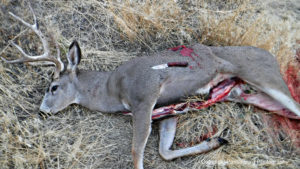
The Cross Knives Lil Whitetail worked well for field dressing this mule deer buck.
Despite having watched various Youtube how-tos, Teddy didn’t know where to start when it came to field dressing the buck.
“I’ll gut it, and you watch and learn,” I commented, and daubed his cheek with blood. “I’m going to kill a buck this afternoon, and you get to take care the next one.” I got to work with the Cross Knives Lil Whitetail Hunter.
Around this time of year, as deer seasons start to open around the country, the new deer hunting knives come on the market. But some of us already know what we want.
Cross Knives are handmade by Pete Winkler, the same craftsman who re-handles knives for Bark River Knives. Handle materials vary, and feature different selections of bone, wood, and synthetic materials. They’re pretty. But they’re made to be used, and these knives are as functional as they are good looking.
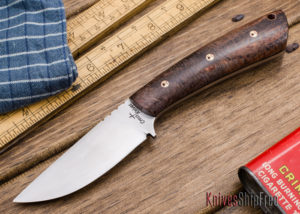
The Cross Knives Lil Whitetail is designed for deer hunting.
-
- Specifications:
- Model Name: Lil Whitetail Hunter
- Handle Material: Stabilized mesquite
- Overall Length: 8.27 (210mm)
- Blade Length: 3.63 (92mm)
- Blade Thickness: 0.15 (3.6mm)
- Weight: 5.6oz.
- Blade Steel: A2 Tool Steel
- Made in USA
High-quality leather sheath included.
Here’s what I liked:
Handle: Mine is in stabilized mesquite – it’s a good-looking package. The handle is a good size for my large hands, and it never got slippery, even though my hands and forearms were bloodied from gutting the animal. I was able to split the ribcage with the blade pretty easily, because I could hold it so well. Needless to say, Winkler’s knives are gorgeous. They’re almost too pretty to use. Some people might be tempted to keep this knife in a display and never use it. Some people. Not me.
Steel: A2 is one of my favorites. I find it to have excellent edge-holding ability, and it is easy to sharpen in the field. In fact, I never needed to touch up the blade after using it. You can take along a sharpener or strop, but you probably won’t need it.
Sheath: A beautiful leather sheath comes with the knife, and it secures the blade safely and well.
Point: I’d like the point better if it had more of a drop. As it is, I would prefer less of an upswept point. Again, that’s just my preference – the point makes for a better belly on the blade for skinning. The design was really good for skinning around the front legs and neck, and probably worked better than a drop point may have. You decide.
Grind: Convex is my favorite grind because the edge is so strong and lasts so long. The whitetail has a full profile convex, and it’s easy to maintain the edge. Once you learn how to use a strop, the procedure is pretty straight forward.
Blade length: At four inches, the blade is about right for a hunting knife. I personally prefer a little longer blade, say about five inches. This is strictly a matter of personal choice – veteran elk hunters I hunt with use everything from a three-inch folder to an eight-inch Bowie.
Other ticky stuff:
After using the Whitetail hard, I notices the edge had rolled and there was some very minor chipping on the belly of the blade. It had been used to disjoint the hips and quarter the carcass, cut off the legs and cut the deer in half. The spinal column was cut twice, and the edge had to go through six rib bones. Then it was used for a lot of skinning. That’s some serious field use, and the blade held up extremely well.
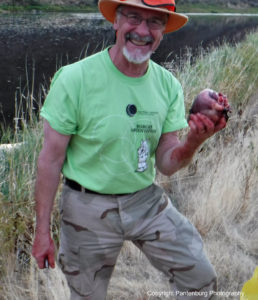
We couldn’t convince Teddy that he should eat the heart raw from his first kill.
The edge was still very usable, but I haven’t noticed this on other knives I use with A2 steel. It took a few swipes on my grandpa’s butchering steel to dress up the edge, then it was stropped on a leather strop with Bark River black compound. The edge was soon back to hair-popping sharp.
FYI – I find stropping the blade on a leather strop with black compound, followed by a few strokes on a plain leather strop, makes the best edge for my needs. While it’s fun to shave hair and whittle paper, that edge is not going to last all that long in actual use. My experience is that you can generally get as much edge as you need with the black compound.
All in all, there was basically nothing I could find wrong with the Whitetail, and there was a whole lot that was right.
The Whitetail is worth looking at if you’re doing a lot of whitetail hunting, and it will do just fine on elk or bigger western deer. In addition to being a very useful knife, it is also very good looking.
When it comes to the Cross Knives Lil’ Whitetail, what’s not to like?
Please click here to check out and subscribe to the SurvivalCommonSense.com YouTube channel – thanks!

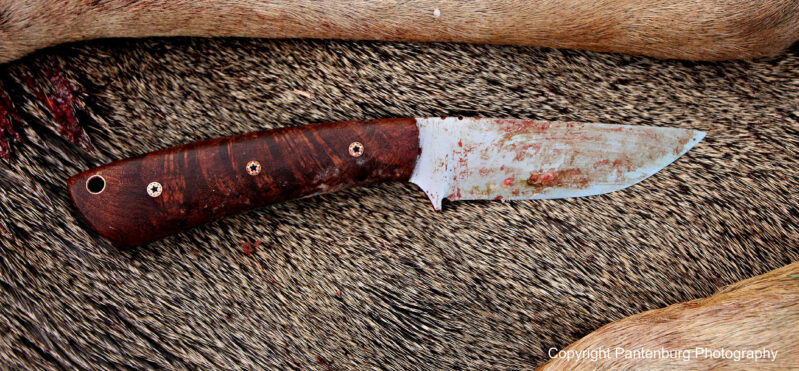

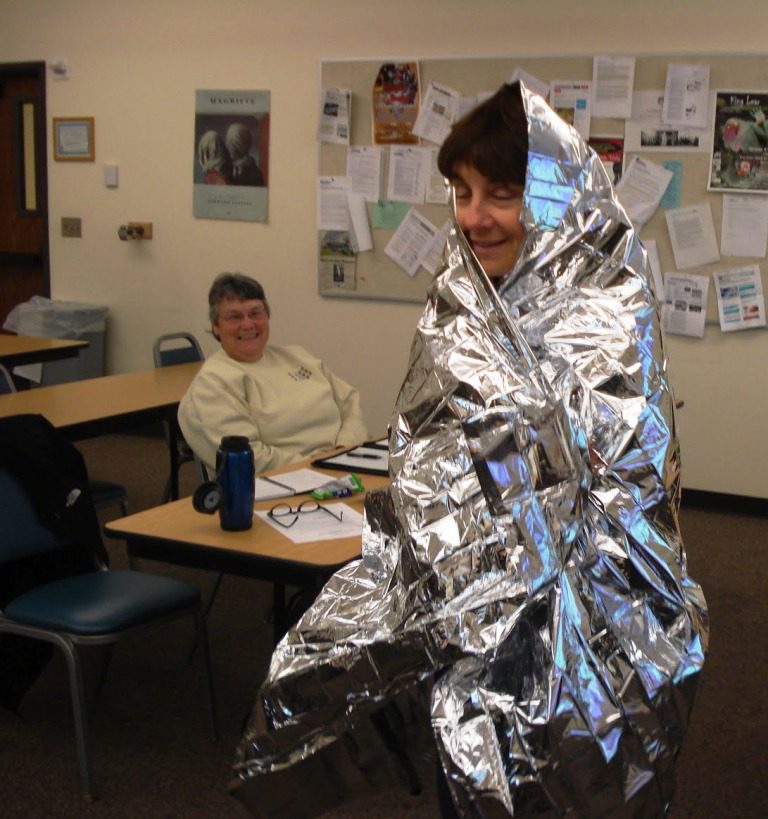
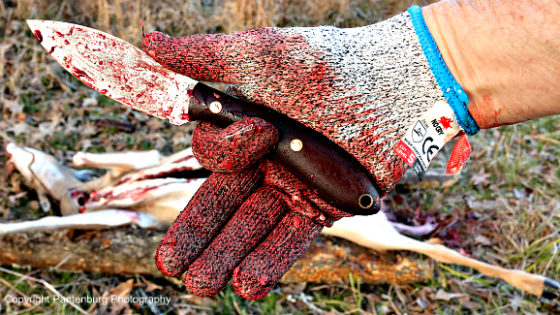
Leave a Reply